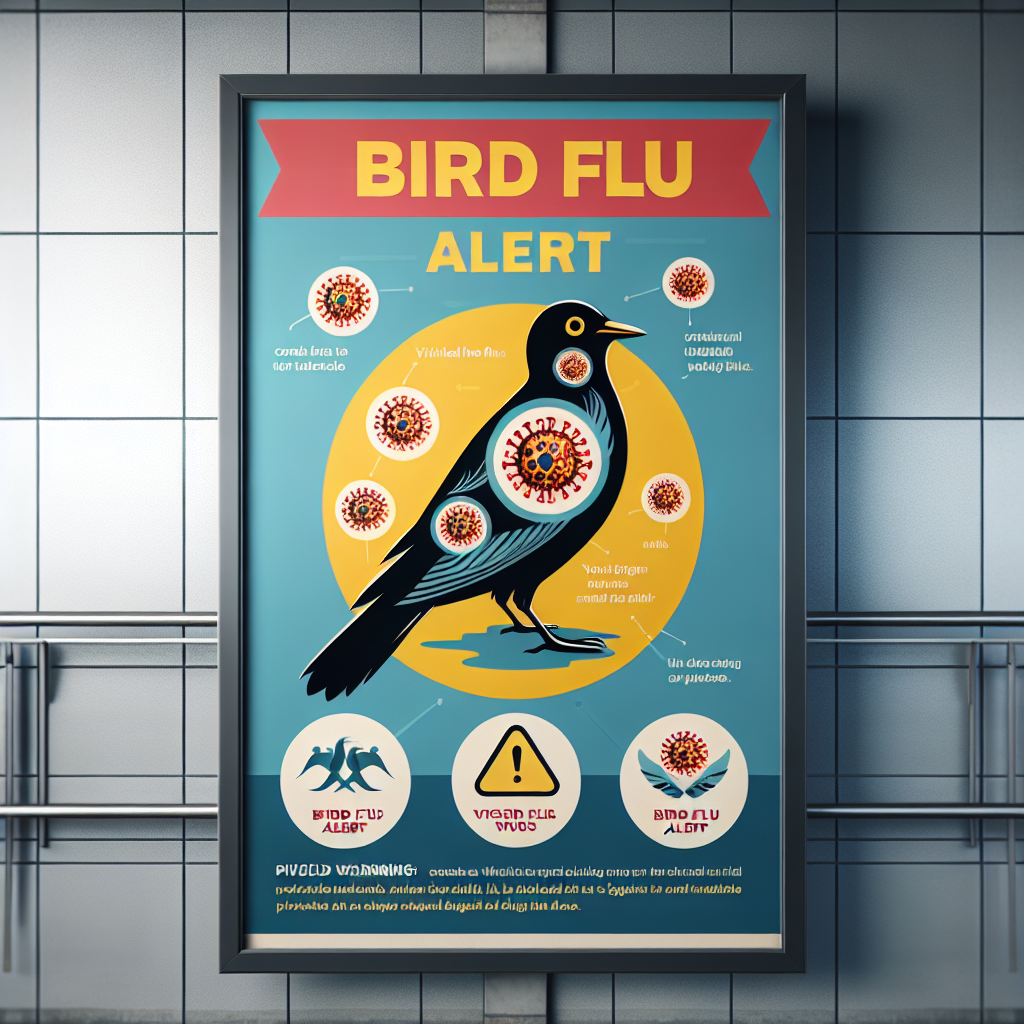Learn how the bluetongue outbreak is disrupting the EU dairy sector. What’s the impact on milk production and prices? Find out now.
Summary:
The recent bluetongue disease outbreak has significantly impacted European sheep and dairy farms, sparking concerns among dairy farmers and industry professionals. Originating in June in the Netherlands, the virus has swiftly spread across several countries, including Belgium, Germany, France, and others, leading to increased sheep mortality and a notable decline in milk production. Even though vaccination efforts are in place, the effects on dairy output and prices are substantial, causing a ripple effect throughout the market. Dairy prices in Europe have surged, with essential products like Emmental and butter reaching all-time highs. “Last year, milk output from affected cows fell an average of nearly 2.2 lbs. per day over ten weeks,” reported the Global Agricultural Information Network (GAIN) [source](https://www.gain.fas.usda.gov). This situation underscores the urgent need for comprehensive strategies and collective efforts to mitigate the impacts of bluetongue. How will producers respond, and what measures will be taken to protect livestock and stabilize the market? Dairy specialists are asking for increased biosecurity measures, such as enhanced farm sanitation, reducing insect vectors, and employing advanced herd management technologies to monitor cattle health closely.
Key Takeaways:
- The latest bluetongue outbreak began in the Netherlands in June and has spread to numerous European countries, affecting sheep and cattle.
- Bluetongue disease, caused by midge bites, does not spread from animal to animal and poses no threat to humans.
- Infected cattle suffer from health and fertility issues, leading to a significant decline in milk production.
- Some farmers send affected cattle to slaughter before full recovery, reducing milk output.
- Milk and dairy product prices in Europe have surged in response to the outbreak, with notable increases in Emmental, whey, skim milk powder, and butter prices.
- The economic impact of bluetongue is evident, with rising prices creating additional challenges for the dairy industry.

The latest outbreak of bluetongue illness has sent shockwaves across Europe’s dairy sector, jeopardizing the livelihoods of numerous farmers. This incredibly infectious virus, infamous for producing catastrophic death rates in sheep, is now wreaking havoc on dairy farms by significantly lowering milk output. What began in the Netherlands in June has spread quickly to Belgium, Germany, Luxembourg, France, Denmark, Austria, England, and even Norway. The outbreak’s rapid spread raises severe worries about its control and long-term effects. “Bluetongue does not spread from animal to animal and poses no danger to humans,” claims the USDA’s Animal and Plant Health Inspection Service. However, the effect on animal health and dairy production is considerable [USDA APHIS].
| Country | Date of First Case | Number of Affected Farms | Estimated Production Decline (%) |
|---|---|---|---|
| Netherlands | June 2023 | 300 | 4.5 |
| Belgium | July 2023 | 250 | 3.8 |
| Germany | July 2023 | 400 | 5.2 |
| France | August 2023 | 350 | 4.9 |
| Austria | August 2023 | 150 | 3.5 |
Bluetongue Virus: A Threat Reignited
Bluetongue disease, often known as BTV, is a viral illness mainly affecting ruminants, including sheep, cattle, and goats. The virus spreads by biting microscopic insects known as midges, notably the Culicoides species. While sheep are the most badly affected, cattle and goats may suffer greatly. It is important to remember that bluetongue does not directly threaten people and does not pass from animal to animal.
Bluetongue outbreaks have historically caused havoc in the global cattle industry. Significant outbreaks have already occurred in Europe, with the 2006-2008 pandemic especially severe. This outbreak resulted in the infection of hundreds of thousands of animals in afflicted areas, causing significant economic losses. Another large epidemic occurred in 2015, mainly in France, prompting intensive vaccination attempts to stem the spread. These occurrences highlight the disease’s tendency to disrupt agricultural operations and economic stability, underlining the need for prompt reaction and prevention measures.
Bluetongue’s Devastating Spread: An Emerging Crisis in European Agriculture
The bluetongue epidemic began in the Netherlands and has quickly spread to other European countries. Since its first outbreak in June, the virus has expanded to Belgium, Germany, Luxembourg, France, Denmark, Austria, England, and Norway. According to current statistics, more than 2,200 farms have reported illnesses, raising worries within the agricultural sector.
The effect on sheep has been especially severe, with high death rates threatening animal herds. Cattle infections, on the other hand, cause a variety of health issues that significantly impact milk supply and fertility, albeit being less lethal. For example, the Global Agricultural Information Network (GAIN) reported an average daily decrease of approximately 2.2 pounds per cow over ten weeks among impacted herds last year, eerily similar to the current epidemic.
This fast spread emphasizes Europe’s need for robust containment and immunization programs. It also highlights the catastrophic economic consequences for dairy producers, who already see a significant drop in milk production and dairy products.
Bluetongue Bleeds Dairy Yield: Production and Quality Take a Hit
The outbreak’s effect on milk output is undeniable. According to Dairy Market News (DMN), weekly milk collections in Western Europe are seeing seasonal declines and direct consequences of bluetongue illness. This is more than simply fewer liters of milk being produced; the milk quality is also deteriorating. Component levels, particularly fat and protein content, have decreased with volume.
The Global Agricultural Information Network (GAIN) research delves further into the topic. Last year, the impacted cows’ milk supply decreased by an average of 2.2 pounds per day over ten weeks. Consider the implications on a broader scale: dozens, if not hundreds, of cows per farm suffering similar losses add up to considerable output shortfalls.
Infected cattle suffer chronic health difficulties, which affect their productivity and cause a lower milk supply. According to DMN, many of these animals continue battling health and reproduction issues long after infection, exacerbating the decrease in milk output. Some dairy producers may, out of despair or strategic need, choose to kill these afflicted animals sooner rather than later, exacerbating the acute shortage in milk output.
Economic Shockwaves: Bluetongue’s Ripple Effect on Dairy Product Prices
The economic impact of the most recent bluetongue epidemic on the dairy sector cannot be underestimated. As the illness spreads throughout important dairy-producing areas in Europe, we’ve seen substantial changes in market dynamics. This is notably noticeable in the recent price increase for dairy products.
Emmental cheese prices have risen 5.7% in the last month, demonstrating the market’s quick reaction to declining supplies. Whey prices in Western Europe have risen even more dramatically, by 10.8%, reaching their highest levels since late 2022. This surge is directly related to lower milk production and higher production costs due to decreased efficiency in afflicted herds.
German skim milk powder has not been immune to these impacts, with prices rising by 10.3%. However, butter has seen the most significant price rise. Butter prices in Germany have reached record highs of more than $4 per pound. Western European butter prices have risen 13.8% from a month ago, demonstrating how severely the bluetongue epidemic has impacted the dairy industry.
These price increases may seem to be a silver lining for dairy producers—higher product prices may balance some losses due to lower milk output. However, the truth is significantly more complicated. Increased pricing reflects increased input costs and more operating problems. Producers may deal with poorer herd production, higher veterinary expenditures, and, in certain situations, the need to cull diseased animals sooner than expected.
The larger supply chain is also under strain. Processors have irregular supplies and varying quality, which affects everything from manufacturing schedules to long-term contracts. Retailers may need to change their pricing methods, perhaps passing on part of the higher costs to customers.
Finally, the bluetongue epidemic demonstrates the dairy supply chain’s susceptibility to disease outbreaks. As stakeholders, examining short-term mitigation techniques and long-term resilience planning is critical. How are you preparing your operations to handle this kind of shock? Understanding and predicting these economic repercussions is critical to our dairy industry’s long-term viability.
Combating Bluetongue: Collective Efforts and Strategic Measures
Dairy farmers and industry experts are working on numerous fronts to tackle the bluetongue epidemic. Vaccination initiatives are at the vanguard of these efforts, with a coordinated drive to immunize susceptible cattle and slow the virus’s spread. However, the immunization push confronts logistical problems and variations in vaccine supply between locations.
In regions with significant outbreaks, many farmers have taken the painful but necessary step of sending infected animals to slaughter. This approach helps to avoid more losses and keeps the herd healthy. While this choice is far from ideal, it is a pragmatic approach to crisis management and reducing long-term effects on agricultural output.
Furthermore, dairy specialists are asking for increased biosecurity measures. This involves increasing farm sanitation, reducing insect vectors, and establishing tight monitoring techniques to identify and treat bluetongue cases early. Technological improvements, such as herd management software and real-time monitoring systems, are also being used to monitor cattle health closely.
The industry has not stopped there. Collaboration among farmers, veterinarians, and government organizations has increased as stakeholders exchange information, resources, and best practices. Educational activities are in place to keep farmers up to date on the newest advances and herd-protection techniques.
Despite the considerable obstacles the bluetongue epidemic faces, the industry’s proactive approach displays resilience and dedication to protecting Europe’s dairy sector. The collaborative effort seeks to alleviate present effects and set the framework for improved preparation for future epidemics.
Bluetongue Outbreak: Raising Alarms and Demanding Action
The developing bluetongue epidemic in Europe has aroused concerns beyond the agricultural community. For dairy producers, the issue highlights livestock’s constant susceptibility to illness and the critical necessity for strong biosecurity policies and practices. According to industry experts, the unprecedented scope of this spread needs a two-pronged approach: emergency intervention and long-term prevention measures.
Dr. Michael O’Leary, a well-known veterinary epidemiologist, emphasizes the need for immunizations while advocating for more research into more effective and long-lasting remedies. “Vaccinations are our frontline defense, but we need to look into developing more resilient livestock breeds and more comprehensive monitoring systems,” he tells the Dairy Reporter.
From an economic viewpoint, the rise in dairy product prices, such as Emmental and butter, calls into doubt market resiliency. Professor Ian Kilgore of the Agricultural Policy Research Institute believes government action may be required to stabilize the market. “In the near term, subsidies and financial assistance for impacted farmers may help to minimize economic shocks. However, we should also concentrate on market diversification to lessen our reliance on a particular location,” Kilgore argues [Agricultural Policy Research Institute].
Furthermore, confident industry leaders emphasize the value of international cooperation. John Edmunds, CEO of a prominent dairy cooperative in the EU, emphasized the need for a unified effort. “To avoid the spread, the EU requires a coordinated plan encompassing both impacted and peripheral nations. He says sharing resources, research, and best practices will be critical [EU Dairy Coops].
Conservatives advocate for practical solutions that balance immediate assistance and long-term sustainability. “Rather than pouring funds into temporary fixes, we need to design frameworks that build resilience from the ground up—starting with farmer education and extending to international policy adjustments,” says Margaret Wilkins, a policy analyst [Conservative Policy Papers].
The ongoing bluetongue epidemic is a sobering warning that fast remedies will not suffice in an increasingly linked society. Policymakers, dairy farmers, and industry stakeholders must cooperate to protect the business from future crises, implementing urgent and long-term initiatives.
The Bottom Line
The current bluetongue epidemic has posed substantial issues for European dairy and sheep producers and has had far-reaching consequences for the whole agricultural industry. With milk supply and quality suffering significantly and prices for essential dairy products such as butter and skim milk powder skyrocketing, the economic consequences are clear and immediate. Despite current immunization attempts, the recurrent nature of this virus raises severe concerns regarding its long-term viability and the efficacy of existing disease management measures.
Looking forward, the EU dairy sector must address the possibility of further outbreaks and devise comprehensive risk-mitigation strategies. Enhanced surveillance, more effective immunizations, and robust contingency plans will be critical to maintaining the industry’s productivity and stability. The issue remains: Are we prepared to take these required actions, or will we continue to respond to the repercussions of this ongoing threat?
Learn more:
- HPAI’s Limited Impact on U.S. Milk Production Despite Rising Cases and Strong Dairy Product Output
- Decline in Dutch Milk Supply Amid Rising EU Production and Stable European Milk Prices
- US Dairy Farmers’ Guide: Navigating Bird Flu Outbreak – Permits, Quarantines and Beyond
 Join the Revolution!
Join the Revolution!
Bullvine Daily is your essential e-zine for staying ahead in the dairy industry. With over 30,000 subscribers, we bring you the week’s top news, helping you manage tasks efficiently. Stay informed about milk production, tech adoption, and more, so you can concentrate on your dairy operations.







 Join the Revolution!
Join the Revolution!







